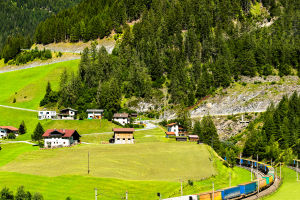Arid deserts, known for their scorching heat and lack of water, seem like the last place one would expect to find lakes.
However, nature's marvels never cease to surprise us. In recent years, a fascinating phenomenon has been observed wherein arid deserts are sprouting thousands of lakes, captivating scientists and nature enthusiasts alike. Let's delve into the intricacies of this astonishing transformation and explore the underlying mechanisms that bring forth these unexpected bodies of water.
Rainfall and Flash Floods:
While arid deserts typically receive minimal rainfall, when precipitation does occur, it can be intense and sporadic. These sudden bursts of rainfall, often referred to as cloudbursts, trigger flash floods that rapidly fill the otherwise barren desert landscapes. The water rushes downhill, carving channels and creating temporary rivers. In the process, the excess water accumulates in natural depressions, forming temporary lakes.
Subsurface Water Reserves:
Beneath the seemingly lifeless surface of arid deserts, lies a hidden secret—subsurface water reserves. These aquifers are underground layers of permeable rock or sand that contain water. In some instances, tectonic activity or natural springs can bring this water closer to the surface, creating opportunities for lakes to form. When the water table rises during rainy periods, it can saturate the soil, causing depressions to fill up with water and resulting in the emergence of ephemeral lakes.
Desert Topography and Basins:
The unique topography of arid deserts plays a crucial role in the formation of lakes. Deserts often consist of rugged terrains with numerous basins, which are natural depressions in the landscape. These basins can act as catchment areas for rainwater, creating temporary reservoirs that evolve into lakes. The shape and depth of the basins determine the longevity and size of the lakes. Some basins may retain water for several months, while others may only hold it for a few days.
Playa Lakes:
Playa lakes are a common type of lake found in arid desert regions. Playas are flat, low-lying areas that often have clay-rich soils. During dry periods, these playas appear as vast, cracked mudflats. However, when heavy rainfall occurs, the clay soils become impermeable, preventing the water from seeping through. Consequently, the basins become flooded, transforming the cracked mudflats into shimmering lakes. These playas are renowned for their ephemeral nature, as they usually dry up once the rainy season ends.
Biodiversity and Ecological Significance:
The sprouting of lakes in arid deserts is not merely a visual spectacle; it also brings about remarkable ecological changes. The sudden presence of water attracts a myriad of organisms, including insects, birds, and amphibians, which flock to these temporary oases. Flora that has lain dormant for years awakens, bursting into vibrant colors and providing nourishment for the diverse wildlife. These lakes act as vital watering holes, supporting the survival of species that have adapted to the harsh desert environment.
The emergence of thousands of lakes in arid deserts defies our expectations and challenges our understanding of these seemingly desolate landscapes. From intense rainfall and flash floods to subsurface water reserves and unique topography, various factors contribute to this remarkable transformation. These temporary lakes not only captivate our imaginations but also foster rich biodiversity and provide a glimpse of life's resilience in even the harshest of environments.


